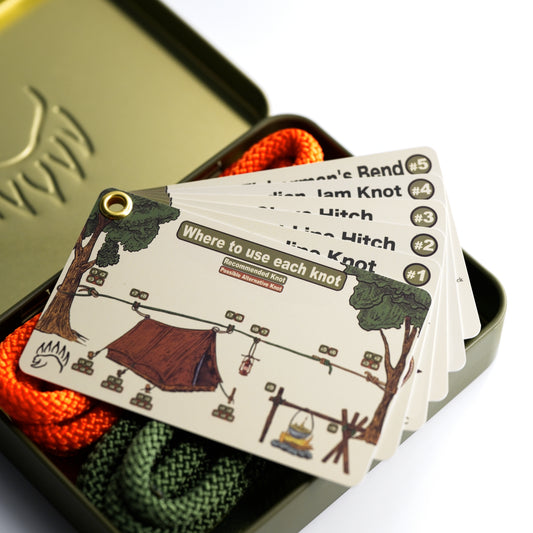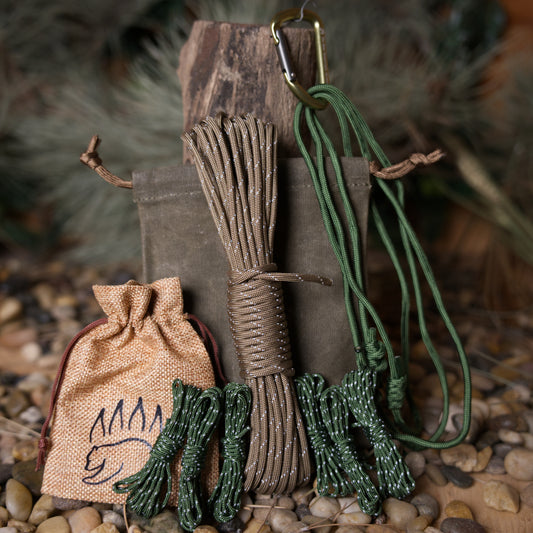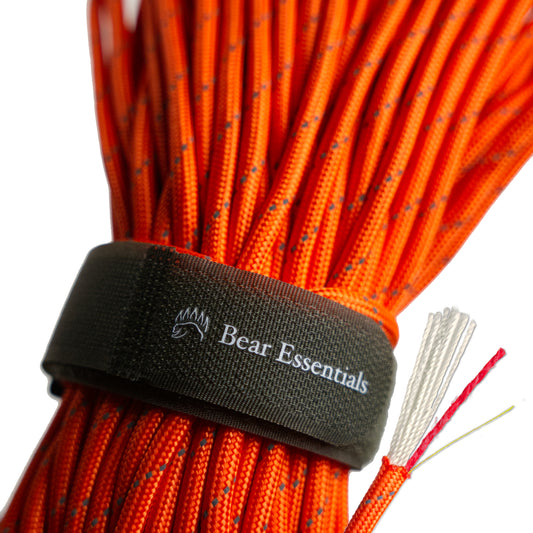How to Tie the Double Rolling Hitch Bend
Usage
The Double Rolling Hitch Bend is commonly used to join two ropes, particularly in climbing and boating for its secure grip and adjustability. Unlike the Double Fisherman’s Bend, which can jam under heavy loads, this bend offers easier untying while maintaining strength, derived from the Rolling Hitch’s friction-based design. Its structure suits dynamic tasks, but it requires careful tying to ensure stability. This knot is valued for its reliability in outdoor and utility applications.
Why Learn the Double Rolling Hitch Bend?
Its friction-based design ensures secure rope connections. This knot is a practical choice for tasks requiring strong, adjustable joins in demanding environments.
Common Uses
-
Climbing:
- Joins ropes for temporary anchor systems.
- Secures lines for adjustable setups in climbing camps.
-
Boating/Marine:
- Connects mooring lines for secure docking.
- Ties ropes for towing or rigging adjustments.
-
Search and Rescue:
- Joins ropes for hauling or anchoring in rescue operations.
- Secures lines for stable litter or stretcher systems.
-
Utility:
- Connects ropes for bundling or pulling tasks.
- Manages cords for temporary setups in workshops.
ABOK Number
(Ashley Book of Knots)
Other Names
Category
|
Notable Features
- Secure grip: Double wraps provide enhanced friction for stability.
- Easy to untie: Releases smoothly after moderate loads.
- Versatile use: Suits climbing, boating, rescue, and utility tasks.
- Adjustable tension: Allows fine-tuning when joining ropes.
- Reliable hold: Maintains strength under dynamic or cyclic loads.
Variations
(No variations mentioned; section left blank.)
Similar Knots
Rolling Hitch vs. Double Rolling Hitch Bend
- Pros: Simpler to tie, ideal for attaching a rope to another under tension.
- Cons: Not designed for joining two ropes, unlike the bend variation.
Midshipman’s Hitch vs. Double Rolling Hitch Bend
- Pros: More secure for single-rope anchoring, less adjustable.
- Cons: Less suited for joining ropes compared to the bend’s dual structure.
Double Fisherman’s Bend vs. Double Rolling Hitch Bend
- Pros: Extremely secure for permanent rope joins.
- Cons: Jams tightly, making it harder to untie after heavy loads.
Zeppelin Bend vs. Double Rolling Hitch Bend
- Pros: Easier to untie and less bulky for similar strength.
- Cons: Less adjustable under load compared to the Rolling Hitch’s friction.
History
The Double Rolling Hitch Bend, a variation of the Rolling Hitch, likely evolved from maritime and climbing contexts where secure, adjustable knots were needed. Referenced in The Ashley Book of Knots (#1734) as part of the Rolling Hitch family, its bend adaptation reflects modern needs for joining ropes in dynamic scenarios. Its use in search and rescue and utility tasks highlights its versatility and reliability. Source: The Ashley Book of Knots
Security Level
The Double Rolling Hitch Bend is reliable for joining ropes under moderate to heavy loads, leveraging its friction-based wraps for stability. It remains easier to untie than many bends, but precise tying is crucial to prevent slipping. For slippery ropes, additional wraps or a stopper knot can enhance security.
Downsides
- Tying precision: Requires careful wrap alignment to ensure grip.
- Not for critical loads: Less secure than fixed bends for life-support tasks.
Structure
- Take the working end of the first rope and wrap it twice around the second rope, moving toward the load direction.
- Pass the working end over the standing part of the first rope and make a half hitch.
- Repeat with the second rope, wrapping it twice around the first rope in the opposite direction.
- Complete the second rope’s tie with a half hitch, mirroring the first rope’s structure.
- Pull both standing ends to tighten, ensuring the wraps are snug and aligned.
Pro Tip: Ensure the wraps are tight and lie flat to maximize friction.
FAQ
Is the Double Rolling Hitch Bend strong enough for heavy loads?
Yes, for moderate loads in climbing or boating, but inspect the knot and ropes carefully.
What ropes work best for the Double Rolling Hitch Bend?
Nylon or polyester ropes of similar diameter ensure secure grip and adjustability.
How does the Double Rolling Hitch Bend compare to the Double Fisherman’s Bend?
It’s easier to untie but less secure for permanent or critical joins.
Can the Double Rolling Hitch Bend be used in rescue operations?
Yes, for non-life-support tasks like hauling or anchoring, but not for primary anchors.
Why choose the Double Rolling Hitch Bend over the Zeppelin Bend?
Its adjustability makes it better for dynamic tasks, though it’s slightly more complex.
Important Notes on Safety
Common failure points include loose wraps or improper half hitches, which can lead to slipping. Always verify the knot is used for appropriate tasks and correctly tied. Inspect ropes for wear or damage before tying. For half hitch security, Ensure wraps are snug and half hitches are properly aligned. Practice tying in low-risk settings to build confidence.









